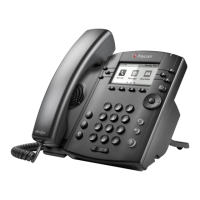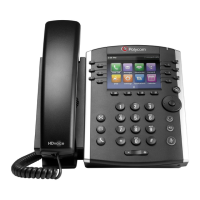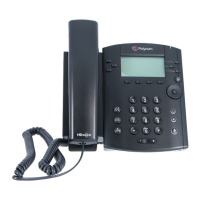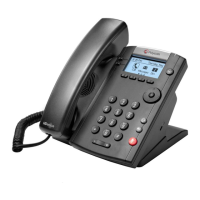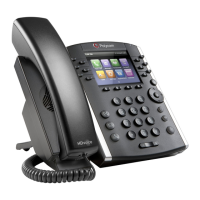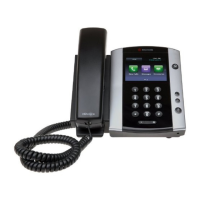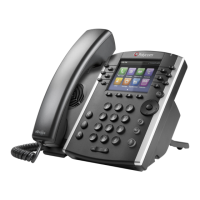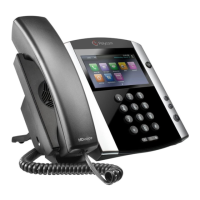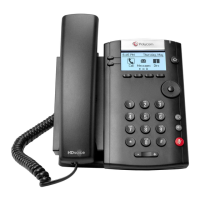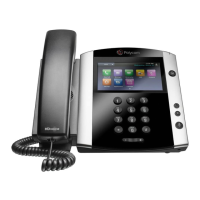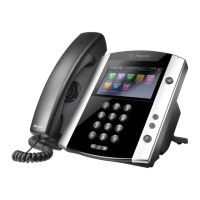Polycom VVX Business Media Phones User Guide UC Software 5.3.0
Polycom, Inc. 134
audio of the telephone call and the page. When you disable the Accept While Busy setting, the incoming
page is held in a Pending state; it does not disrupt the telephone call, and you cannot hear the page.
To enable or disable pages to play during an active call:
1 Select Settings > Basic > Preferences > Paging/PTT Configuration > Group Paging.
On VVX 1500 phones, select Menu > Settings > Basic > Preferences > Paging/PTT
Configuration > Group Paging.
2 From the Group Paging Configuration screen, scroll to Accept While Busy, and enable or
disable the setting.
The default setting is Disabled. When enabled, your phone accepts and plays pages while you are
in an active call. When disabled, your phone does not play pages while you are in a call, but holds
them as Pending instead.
Broadcast Messages with Push to Talk
The Push-to-Talk (PTT) feature is a collaborative tool that enables you to transmit messages and listen to
replies, much like a walkie-talkie. Your system administrator can set up both features on your phone.
Your system administrator can define up to 25 channels for PTT mode, and your system administrator
can assign a label to each channel that easily identifies the phones in the channel, such as All, HR Dept,
Shipping Staff, or Executives.
Each group or channel has one of the following priorities:
● Normal By default, broadcasts sent to channels 1 to 23 are considered Normal broadcasts. If two
users begin a broadcast on the same group/channel at the same time, the phone with the lower
serial number continues to transmit while the other phone enters the receiving state. By default, all
phones are configured to receive broadcasts sent to channel 1.
● Priority By default, broadcasts sent to channel 24 are considered Priority broadcasts. A Priority
broadcast interrupts Normal broadcasts or active calls. All phones receive Priority broadcasts
unless Do Not Disturb is enabled. Phones play Priority broadcasts at the phone’s current audio
level.
● Emergency By default, broadcasts sent to channel 25 are considered Emergency broadcasts. An
Emergency broadcast interrupts Normal broadcasts, Priority broadcasts, and active calls and plays
out at near maximum volume even if Do Not Disturb is enabled.
Send and Receive PTT Broadcasts
By default, you are subscribed to Channels 1, 24, and 25. This means that you can send and receive PTT
broadcasts on Channels 1, 24, and 25.
When you end a PTT broadcast, the channel remains open and enters a 10-second waiting period. This
waiting period gives people who received the broadcast a chance to respond. If no one responds within
the waiting period, the channel closes.

